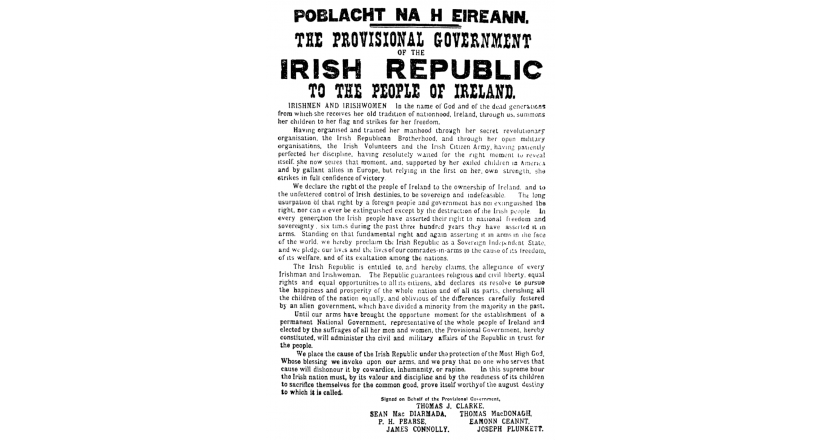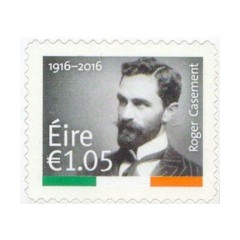The Easter Rising (Irish: Éirí Amach na Cásca), also known as the Easter Rebellion, was an armed insurrection in Ireland during Easter Week, April 1916. The Rising was launched by Irish republicans to end British rule in Ireland and establish an independent Irish Republic while the United Kingdom was heavily engaged in the First World War. It was the most significant uprising in Ireland since the rebellion of 1798, and the first armed action of the Irish revolutionary period. Sixteen of the Rising's leaders were executed in May 1916, but the insurrection, the nature of the executions, and subsequent political developments ultimately contributed to an increase in popular support for Irish independence.
Organised by a seven-man Military Council of the Irish Republican Brotherhood, the Rising began on Easter Monday, 24 April 1916, and lasted for six days. Members of the Irish Volunteers—led by schoolmaster and Irish language activist Patrick Pearse, joined by the smaller Irish Citizen Army of James Connolly and 200 women of Cumann na mBan—seized key locations in Dublin and proclaimed an Irish Republic. The British Army brought in thousands of reinforcements as well as artillery and a gunboat. There was fierce street fighting on the routes into the city centre, where the rebels put up stiff resistance, slowing the British advance and inflicting heavy casualties. Elsewhere in Dublin, the fighting mainly consisted of sniping and long-range gun battles. The main rebel positions were gradually surrounded and bombarded with artillery. There were isolated actions in other parts of Ireland. Volunteer leader Eoin MacNeill had issued a countermand in a bid to halt the Rising, which greatly reduced the number of rebels who mobilised.
With much greater numbers and heavier weapons, the British Army suppressed the Rising. Pearse agreed to an unconditional surrender on Saturday 29 April, although sporadic fighting continued briefly. After the surrender the country remained under martial law. About 3,500 people were taken prisoner by the British, and 1,800 of them were sent to internment camps or prisons in Britain. Most of the leaders of the Rising were executed following courts-martial. The Rising brought physical force republicanism back to the forefront of Irish politics, which for nearly 50 years had been dominated by constitutional nationalism. Strong opposition to Britain's reaction to the Rising contributed to changes in public opinion and the move toward independence, as shown in the December 1918 election win by the Sinn Féin party. They convened the First Dáil and declared the independence of the Irish Republic.
485 people were killed in the Easter Rising: 54% were civilians, 30% were British military and police, and 16% were Irish rebels. More than 2,600 were wounded. Many of the civilians were killed as a result of the British using artillery and heavy machine guns, or mistaking civilians for rebels. Others were caught in the crossfire in a crowded city. The shelling and the fires it caused left parts of inner city Dublin in ruins.





